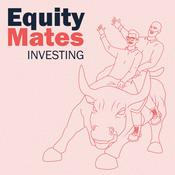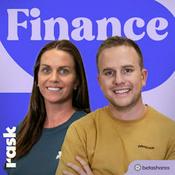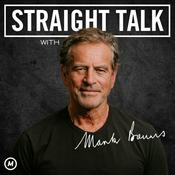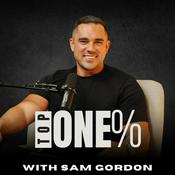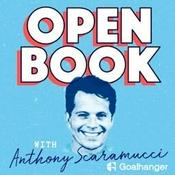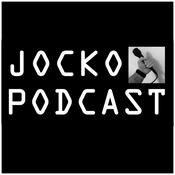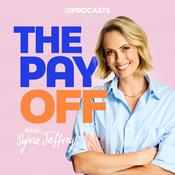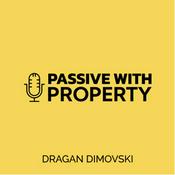48 episodes

Values of the Slack Product: Part 1
17/12/2025 | 21 mins.
Exploring the Values of the Slack Product: Part OneIn this episode, James Sherrett delves into the starting values of the Slack product and how those values evolved over time. With personal anecdotes and a model of technology from Ursula Franklin's The real World of Technology, James focuses on 3 values of "the system of Slack": default to trust and openness, a shared reality and compassion through service. How were each of these connected to Slack's design and reflecting the original team’s work philosophy? Then, how did they change over time?00:00 Introduction: The Values of Slack00:59 The shift to product values02:01 Personal reflections and Dublin insights03:55 Technology and its broader context07:40 The System of Slack09:20 3 values of the System of Slack09:49 Default to trust and openness12:35 A shared reality through channels15:07 Delivering compassion through service19:50 Adapting to larger customers21:10 What to expect in part 2 This is a public episode. If you would like to discuss this with other subscribers or get access to bonus episodes, visit www.slackstory.com

Irish Irish Coffee (with recipe)
10/12/2025 | 7 mins.
A True Irish Coffee Experience — Reviving an Authentic TraditionIn this episode, James Sherrett recounts his first Christmas in Ireland, some family traditions and a memorable encounter with Irish neighbors. After being invited for a holiday drink, we discovered the true essence of Irish coffee, a far cry from the mediocre versions previously known. We leave with a deliciously rich and savory homemade Irish coffee recipe. We repatriate the recipe to Canada and it becomes a tradition for family and friends. The episode concludes with the Irish coffee recipe and a cautionary note on moderation.00:00 Introduction: A Irish Irish coffee tale00:18 Settling into Irish life01:20 Meeting the beighbors03:35 A memorable afternoon04:43 The perfect Irish Irish coffee recipe07:07 Serving recommendations This is a public episode. If you would like to discuss this with other subscribers or get access to bonus episodes, visit www.slackstory.com

How I Got Replaced in Europe
03/12/2025 | 13 mins.
Building Slack's Success in Europe: Leadership Transition & ExpansionJames Sherrett recounts his experience establishing Slack's EMEA offices in Dublin and London. He reflects on his journey, which included recruiting and training his team, finding new office spaces, and scaling the business from 30 to 120 employees. Sherrett focuses on the leadership transition, detailing his meetings with prospective candidates, especially Johan Butting, who eventually succeeded him. And then what?00:13 Opening Slack's EMEA offices01:28 Meeting potential new leaders03:24 Always building, building, building the team04:07 Rooftop restaurants08:12 New Dublin office acreage10:25 Official Search for a New Leader12:48 Conclusion: Next Steps and Irish Coffees This is a public episode. If you would like to discuss this with other subscribers or get access to bonus episodes, visit www.slackstory.com

Gentrifying Slack With Radio London
26/11/2025 | 23 mins.
Building Slack London: Growth, Challenges, and Lessons LearnedIn this episode, James Sherrett narrates the story of establishing Slack's London office, detailing the company's strategic growth and the beginning of its Customer Success practices. Starting with the first hire, Rav Daliwhal, James recounts the early challenges of locating suitable London office space and adapting to the emerging field of customer success. The narrative explores the evolving complexity of Slack's sales teams, reflecting on the company's gentrification and organizational changes. Significant customer acquisitions, office expansions, and the shift from a startup mentality to a structured enterprise come up. James also shares personal insights about the mistakes he made during this growth phase, shedding light on changes in hiring practices and the balancing act between retaining Slack's unique culture and striving for growth. The episode concludes with a teaser on prospecting candidates and further developments in Dublin.00:00 Introduction: The Slack London Story Begins00:25 Meeting Rav Dal: The Start of Customer Success02:21 Establishing Slack London: Challenges and Growth02:51 The WeWork Experience: Pros and Cons04:13 Building the Team: New Hires and Roles04:58 Growing Pains: Transitioning to a Sales Team06:25 Major Clients and Customization08:37 Office Expansion: Moving to Ying House12:50 Reflections on Leadership and Hiring Mistakes21:58 Conclusion: Embracing Change and Growth This is a public episode. If you would like to discuss this with other subscribers or get access to bonus episodes, visit www.slackstory.com

I See London, I See France
19/11/2025 | 16 mins.
Slack's European Expansion MissionJames Sherrett narrates the journey to various European cities, from Dublin to London, Paris, and beyond, to promote and expand Slack. He details the challenges and successes of targeting tech-forward organizations, adapting to the unique nuances of over 20 smaller markets, and overcoming skepticism towards new, US technology. Sherrett emphasizes the importance of talking with customers, shares anecdotes from his travels, highlights internal challenges with hiring, and discusses balancing work with family life. This episode captures some key moments of the mission to introduce Slack to Europe.00:23 Taking on the Mission: Spreading the Word About Slack01:43 Carving off European markets: challenges and opportunities02:33 Establishing a presence in London03:33 Customer Success stories: Sky News, Ocado, and more04:18 Hiring challenges and cultural insights04:49 Meeting GE in Cardiff06:20 TechCracker conference at Stirling Castle in Scotland13:44 Struggling with work and family during travel14:59 Reflections and personal sacrifices16:22 Conclusion: the shared mission This is a public episode. If you would like to discuss this with other subscribers or get access to bonus episodes, visit www.slackstory.com
More Business podcasts
Trending Business podcasts
About A Slack Story Podcast
Listen to A Slack Story Podcast, Equity Mates Investing Podcast and many other podcasts from around the world with the radio.net app

Get the free radio.net app
- Stations and podcasts to bookmark
- Stream via Wi-Fi or Bluetooth
- Supports Carplay & Android Auto
- Many other app features
Get the free radio.net app
- Stations and podcasts to bookmark
- Stream via Wi-Fi or Bluetooth
- Supports Carplay & Android Auto
- Many other app features


A Slack Story Podcast
download the app,
start listening.
